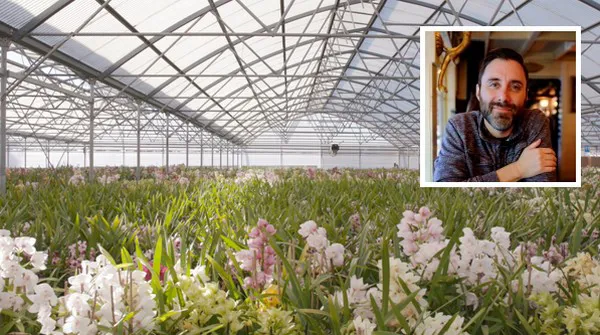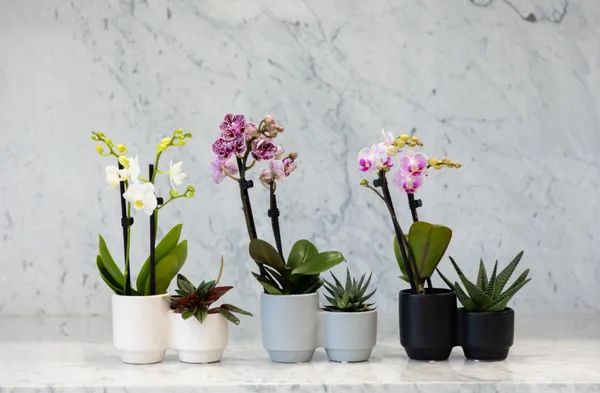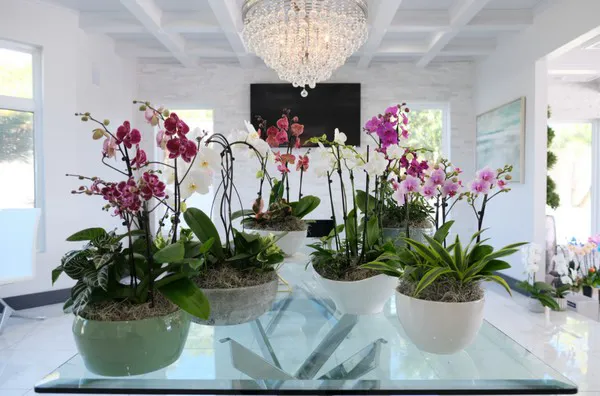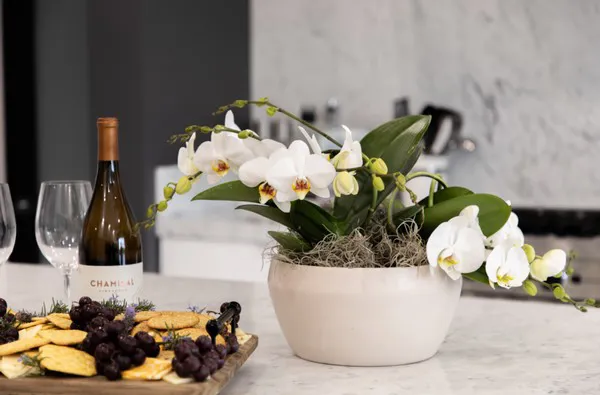“The demand for florals continues to be high, and all varieties are exceeding our historical demand,” says Jeff Karpman, Director of Sales at Westerlay Orchids, a Californian orchid grower. According to Karpman, this demand is due to several COVID-related factors, from a strong housing market to the unexpected length of the pandemic. “In addition, these increases in demand mirror the greater fiscal impact the general population is experiencing, as price points have reflected the COVID impacts on both ends of the spectrum, for example.” Karpman shares his views on the recent high demand, as well as Westerlay’s new projects that will bring their business more efficiency and closer to becoming carbon neutral. 
Jeff Karpman and Westerlay Orchids’ greenhouse
Health and safety first
Karpman explains that, despite the challenges that COVID-19 has brought and the changing market conditions, Westerlay Orchids has seen a significant increase in demand from most channels of distribution. “The only two sectors of the floral industry truly affected negatively by the pandemic were hospitality and event planning. Since these two areas are not significant drivers for the organization, we were not negatively impacted.” Regarding the company's overall health, Westerlay has rallied around a common goal of health and safety first. “With a 90%+ vaccination rate, COVID safety protocols, and top-down messaging from ownership, we’ve been able to limit our exposure. Though we are proud of the success these measures have shown, we remain vigilant with attention paid to the fundamentals of employee care on a daily basis.”
The four COVID-related factors leading to high demand
While the demand continues to be high, Karpman is forecasting a plateau based on a trending downturn in US financial markets, slowing housing/rental markets, a decrease in unemployment services, as well as poor post-holiday job growth. “So far, however, the floral industry has outpaced other sectors over the past 18 months due to many COVID-related factors, which include the following four factors. 1. A strong housing market and work-from-home setup emphasize the desire for individuals to enhance their environment. 2. Discretionary income being diverted from travel and entertainment to home interior purchasing. 3. In times of crisis, live goods purchasing tends to increase as people seek out things in their sphere that create a more calming, fulfilling, and nurturing environment. 4. As the pandemic exceeded most people’s anticipated length of time, buyers fell into purchasing habits that take time to adopt. The longer the pandemic is a threat to society, and the purchasing behavior remains the same, the more apt the non-pre-pandemic plant buyer will continue their plant buying habits once the pandemic ceases to be an immediate threat.”
“High demand mirrors greater fiscal impact people are experiencing”
At Westerlay Orchids, everything is popular right now and exceeding historical demand. “With that in mind, the 2” ‘Darling’ orchids opening price point as well as the higher end garden arrangements are outpacing the general assortment. These increases in demand also mirror the greater fiscal impact the general population is experiencing. The 2” ‘Darlings’ are popular now because floral purchasers, who were negatively impacted by COVID but still want to participate, are buying down to a more affordable price point, and this lower price point is great for the first time plant parent. On the higher end, more luxurious garden arrangements have been increasing in demand, in part to how local florists and floral markets were impacted by COVID. As more independent shops close or reduce their operations, consumers are being driven into grocery stores at a record pace. For most consumers, this change in destination has made their local grocery store’s floral department their first choice when purchasing floral.”
New projects on the horizon
According to Karpman, the biggest challenge for Westerlay Orchids, outside of maintaining a healthy work environment, is mid-long term production planning. “Nobody could have predicted where we are now 18 months ago. Thus the same can apply for the next 18 months. We are applying our most educated guess as we plan for the future, but it will be up to the experienced team we have in place to adapt to whatever conditions are in store, and we look forward to the future.” Indeed, Westerlay Orchids is planning several major projects in order to improve their business even further. “First of all, a solar project is near completion. Once we go live with the new system, all electricity at this site will be generated via the newly installed solar array, which is a major step in the company's vision of being carbon neutral. We are also installing a hard goods racking system, which will house 80%+ of Westerlay’s hard goods and packing material. This addition will allow us to better manage inventory, decrease transportation between facilities, increase efficiency and prepare the team for the launch of a new ERP system in 2022. This “Enterprise Resource Planning” system will advance the technical execution of all departments with enhanced ability to manage inventory, increase visibility to all facets of the supply chain, create better inter-departmental efficiency and in general modernize the operation to the highest industry standard.”
For more information:
Westerlay Orchids
www.westerlayorchids.com
